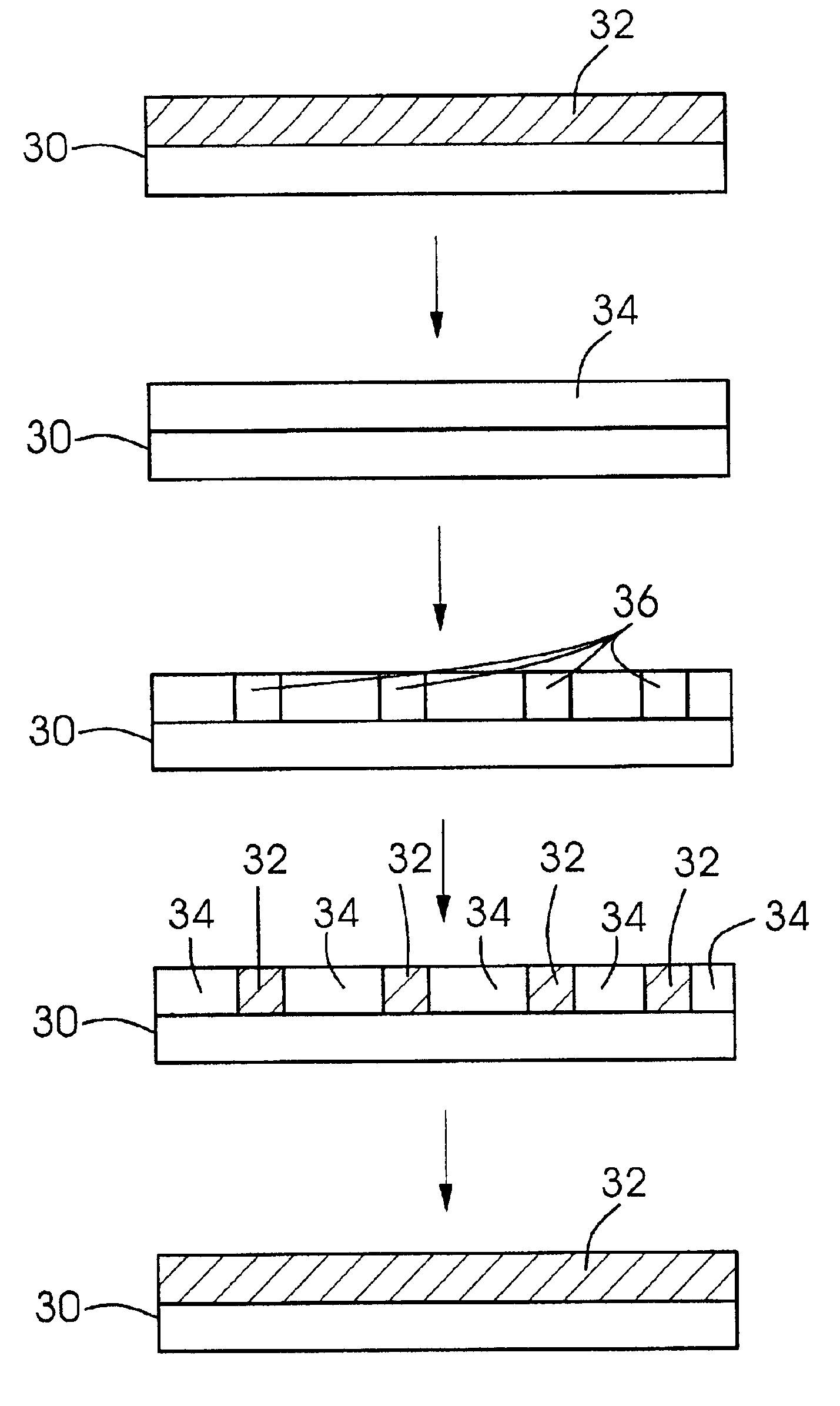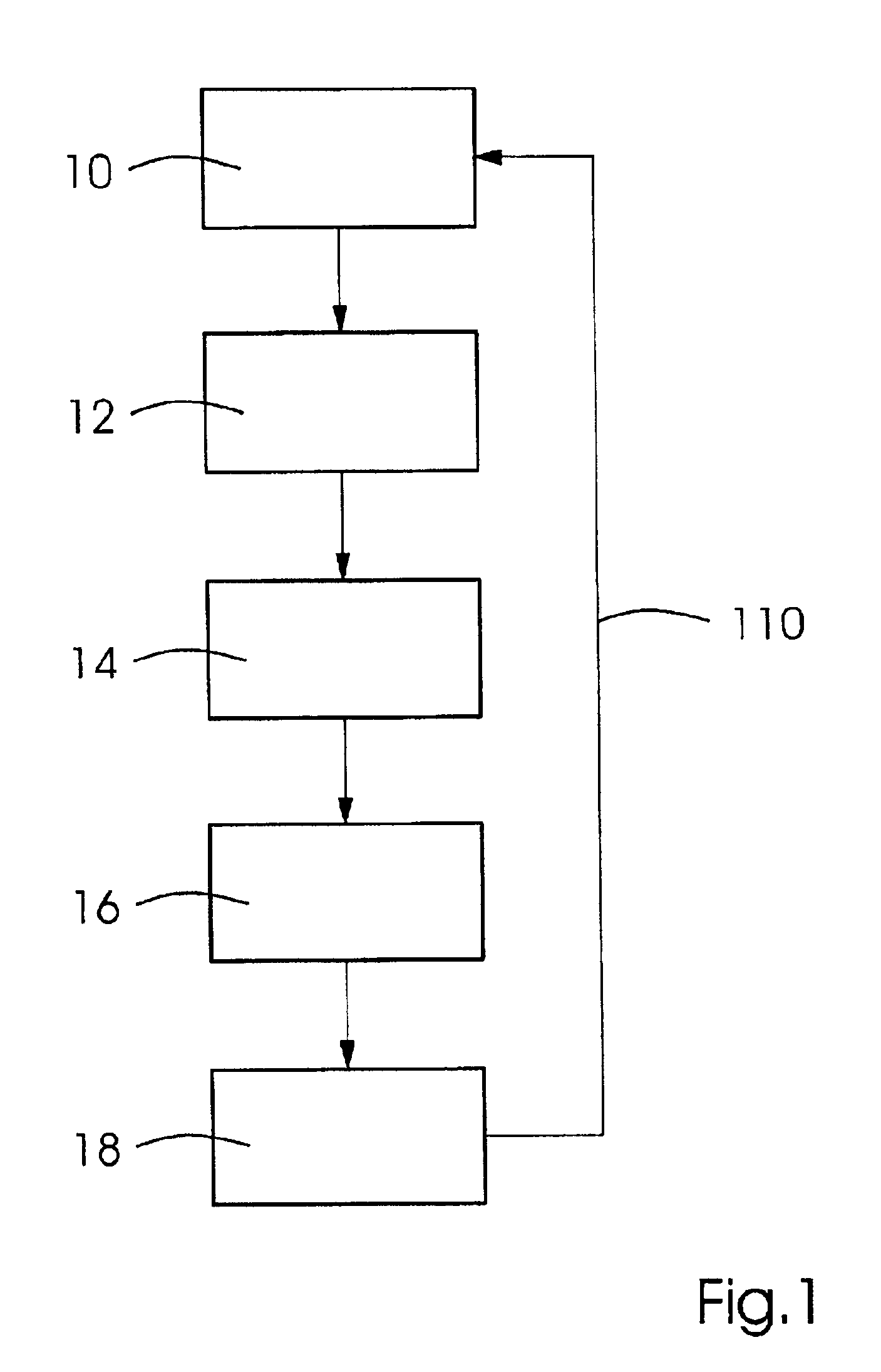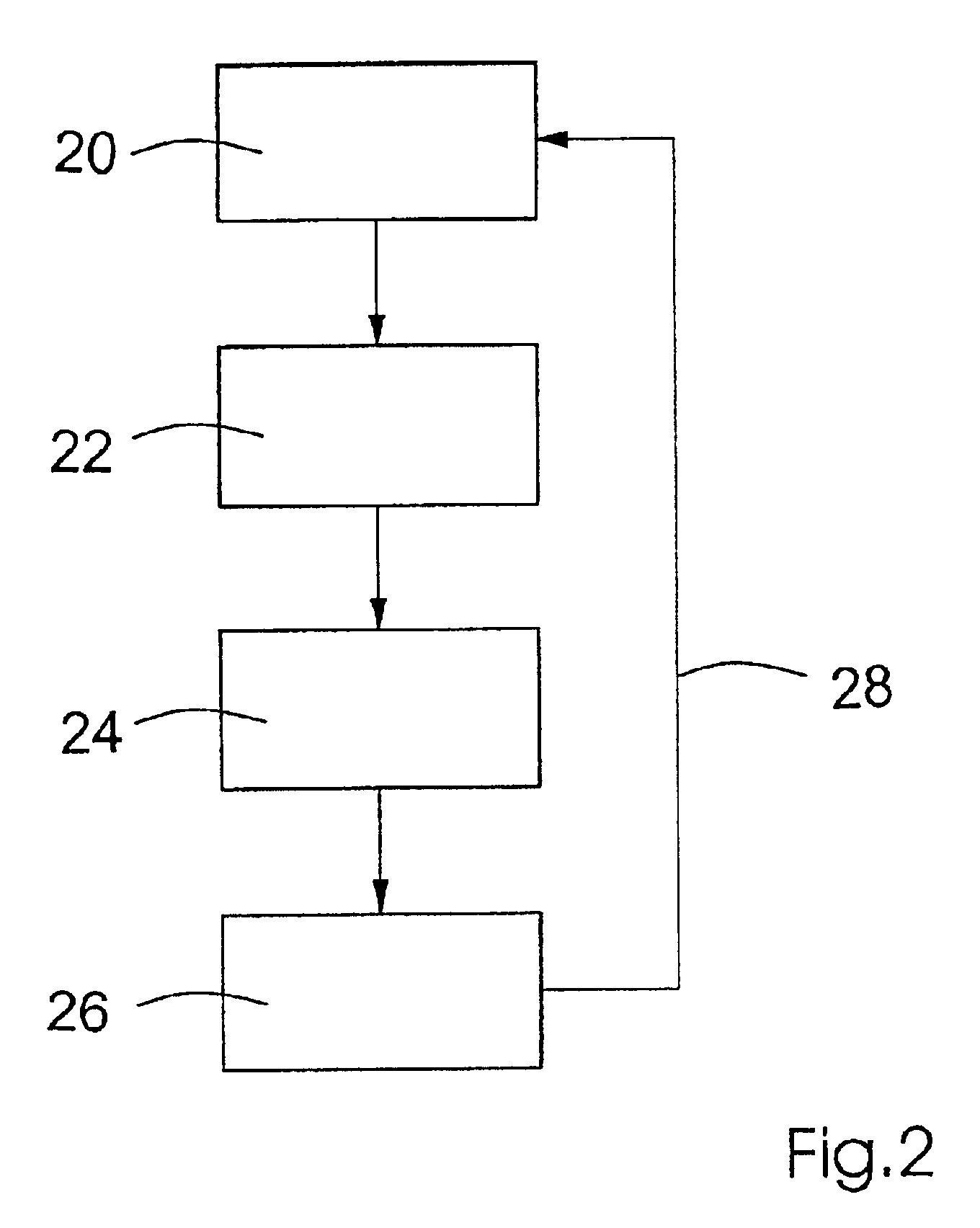Imaging and erasing of a printing form made of polymer material containing imide groups
a printing form and polymer material technology, applied in wet duplicators, thermography, instruments, etc., can solve the problems of low stability of time characteristic switching, inability to achieve offset methods, and the fact that titanium dioxide layers can be switched with uv light, so as to achieve stable and easy-to-change surfaces for printing processes
- Summary
- Abstract
- Description
- Claims
- Application Information
AI Technical Summary
Benefits of technology
Problems solved by technology
Method used
Image
Examples
Embodiment Construction
[0029]FIG. 1 shows a flow chart of the method according to the present invention including a chemical initialization step which includes a treatment with a basic substance. The flow chart serves to illustrate the individual method steps and their order. The polymer material used in the method according to the present invention is a substance which, in the first, original state, is highly hydrophobic and, at the same time, therefore, carries color well.
[0030]The polymer material is subjected to a base treatment 10. For instance, it is exposed to an aqueous solution of a strong base such as potassium hydroxide or sodium hydroxide for a certain time interval in the range of minutes. This treatment makes the polymer material hydrophilic. Thus, a large-area base treatment 10 makes the surface hydrophilic over a large area. The actual patterning is carried out in this state: The color-carrying and the non-color carrying regions, that is, image areas and non-image areas are defined. A loca...
PUM
| Property | Measurement | Unit |
|---|---|---|
| wavelength | aaaaa | aaaaa |
| wavelength | aaaaa | aaaaa |
| wavelength | aaaaa | aaaaa |
Abstract
Description
Claims
Application Information
 Login to View More
Login to View More - R&D
- Intellectual Property
- Life Sciences
- Materials
- Tech Scout
- Unparalleled Data Quality
- Higher Quality Content
- 60% Fewer Hallucinations
Browse by: Latest US Patents, China's latest patents, Technical Efficacy Thesaurus, Application Domain, Technology Topic, Popular Technical Reports.
© 2025 PatSnap. All rights reserved.Legal|Privacy policy|Modern Slavery Act Transparency Statement|Sitemap|About US| Contact US: help@patsnap.com



